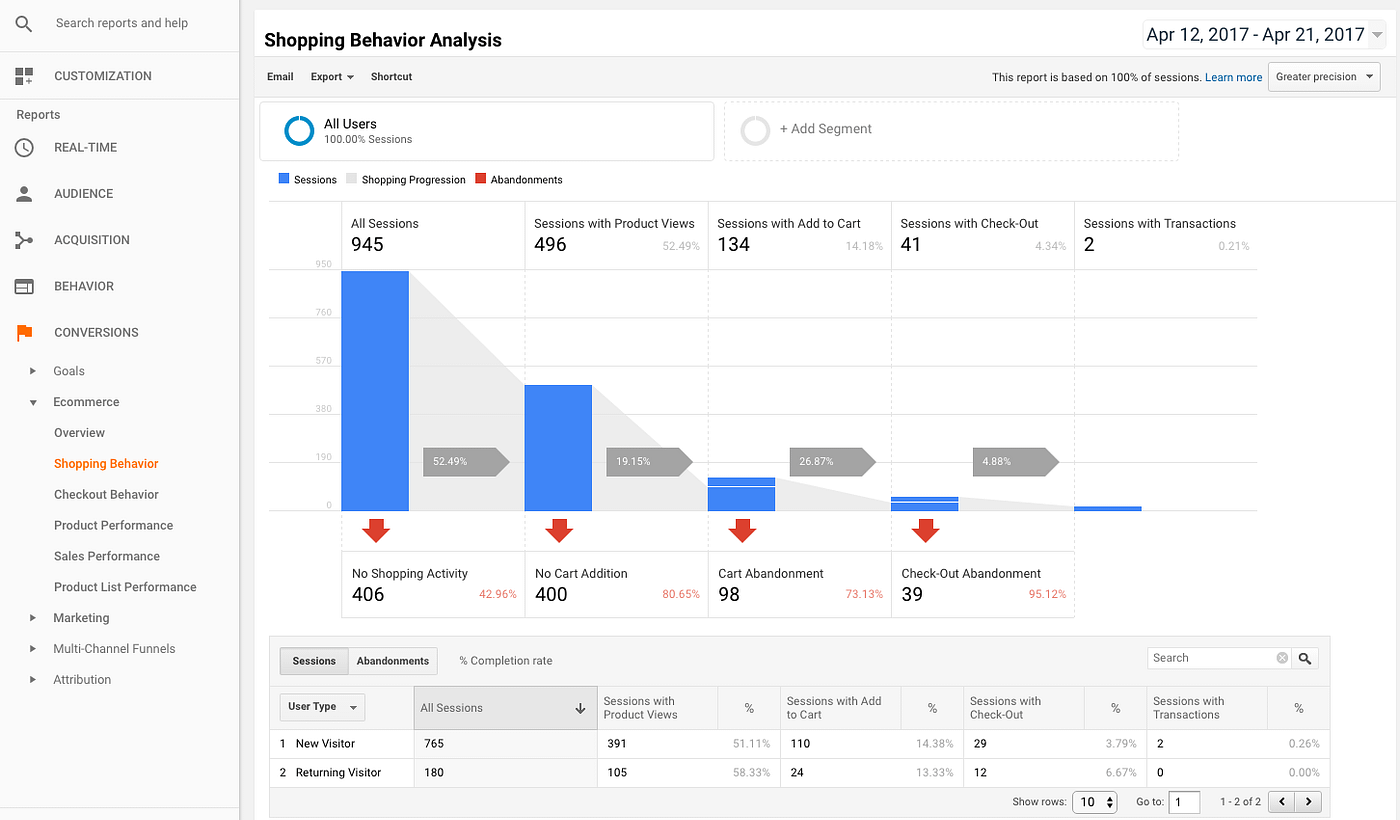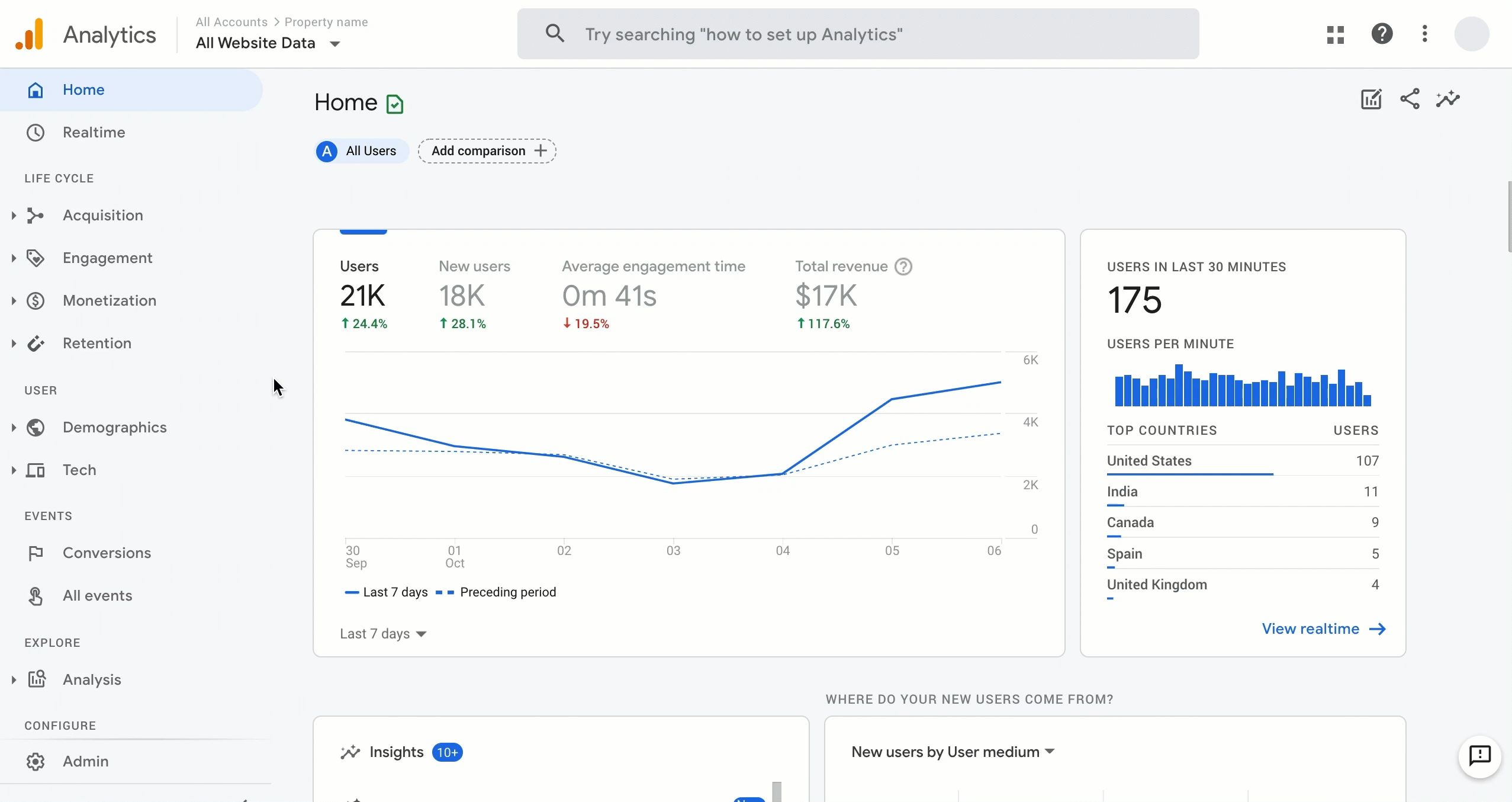Understanding the Art of Utilizing Information With Advanced Google Analytics Methods
The essential lies in mastering the art of using data with innovative techniques that go past surface-level evaluation. What truly establishes apart the specialists in this field is their capability to effortlessly integrate Google Tag Supervisor right into the mix, making it possible for improved monitoring capacities that redefine the borders of data usage in the electronic landscape.
Understanding Complicated Google Analytics News

One important aspect of understanding complicated Google Analytics records is determining and analyzing vital performance indicators (KPIs) KPIs specify metrics that align with the objectives of a service or internet site. By concentrating on relevant KPIs, such as conversion rates, bounce prices, and typical session period, experts can obtain a deeper understanding of exactly how users engage with the website and where enhancements can be made.
In addition, delving right into segmentation within Google Analytics reports permits a more granular analysis of data. By segmenting information based on different variables such as demographics, traffic resources, or customer habits, analysts can reveal patterns and patterns that may not be noticeable when taking a look at the data overall. This comprehensive evaluation can supply important understandings for optimizing advertising and marketing strategies, improving user experience, and inevitably achieving service goals.
Leveraging Personalized Capacities and Metrics
Exploring the usage of personalized dimensions and metrics can considerably improve the deepness of analysis in Google Analytics. Customized measurements enable for the development of added data indicate section and analyze information beyond the default dimensions provided by Google Analytics. By specifying customized dimensions, such as customer characteristics or session details particular to your site, you can obtain valuable understandings right into individual actions and interactions.
On the various other hand, personalized metrics enable the monitoring of distinct information points that are not covered by the conventional metrics in Google Analytics. This personalization equips you to customize your analytics to fit your organization goals more efficiently. By including personalized metrics like scroll deepness, video clip engagement, or certain event interactions, you can evaluate and measure efficiency metrics that are vital to your website's success.
Applying Advanced Data Division Strategies
Using sophisticated information segmentation techniques enhances the precision of analysis in Google Analytics, permitting for targeted insights into individual behavior and efficiency metrics. By segmenting data efficiently, online marketers can identify details user groups based on various standards such as demographics, behavior, or acquisition networks. This segmentation allows a much deeper understanding of how various sections interact with an internet site or application, leading to even more find out informed decision-making procedures.
Advanced data segmentation methods in Google Analytics surpass fundamental segmentation by including customized measurements, metrics, and progressed filtering choices. Marketing professionals can produce sectors based on a mix of parameters, permitting very specific and tailored evaluation. As an example, segmenting individuals who have purchased and saw a specific page can offer insights right into the efficiency of advertising campaigns in driving conversions.
Additionally, progressed sectors can be related to different reports within Google Analytics, giving a comprehensive sight of segmented information throughout various measurements (when does the tracking code send an event hit to google analytics?). This alternative method to data division encourages marketing experts to discover covert patterns, identify opportunities for optimization, and inevitably boost the total efficiency of their digital properties
Making Use Of Information Visualization Tools Successfully
Effective use of information visualization devices is vital for changing intricate data establishes into actionable understandings for informed decision-making in digital analytics. Information visualization tools, such as Google Data Workshop, Tableau, or Power BI, play an essential role in streamlining the analysis of huge amounts of information. By aesthetically representing information with graphes, charts, and interactive dashboards, these tools enable experts to recognize patterns, trends, and relationships that might not be evident in raw information.

Grasping Google Tag Manager for Boosted Tracking
Making the most of the possibility of Google Tag Supervisor is vital for optimizing monitoring capacities and improving data collection precision in digital analytics (when does the tracking code send an event hit to google analytics?). Google Tag Manager (GTM) acts as an effective tool that streamlines the procedure great site of managing tags, activates, and variables on a web site without needing manual code changes. By mastering GTM, look at these guys electronic online marketers can efficiently execute and upgrade numerous tracking codes, such as Google Analytics, Facebook Pixel, or personalized occasion tracking, to collect useful information on individual actions and interactions
Via GTM's straightforward interface, professionals can set up sets off to track details customer activities, like form submissions or switch clicks, and define variables to record appropriate data points, such as customer IDs or web page Links. By understanding Google Tag Manager, businesses can improve their tracking abilities, enhance data precision, and ultimately make even more enlightened choices based on trusted analytics understandings.
Final Thought
To conclude, understanding sophisticated Google Analytics methods is important for organizations to properly use data for decision-making. By recognizing intricate records, leveraging custom-made dimensions and metrics, carrying out advanced division methods, and using data visualization devices, organizations can acquire important insights into customer behavior and boost their on-line efficiency. In addition, grasping Google Tag Supervisor enables improved monitoring and personalization of data collection. Overall, these strategies empower organizations to make enlightened choices and optimize their online visibility.
By segmenting data based on different factors such as demographics, website traffic sources, or customer behavior, experts can reveal patterns and trends that might not be noticeable when looking at the data as a whole.Reliable usage of information visualization devices is crucial for changing intricate data sets into workable insights for notified decision-making in electronic analytics. Information visualization tools, such as Google Data Studio, Tableau, or Power BI, play an important duty in simplifying the interpretation of large amounts of information.When using information visualization tools, it is crucial to pick the most proper visualization kind based on the nature of the data and the insights being looked for - when does the tracking code send an event hit to google analytics?. By mastering the art of making use of data visualization devices efficiently, experts can open the full potential of their information to drive calculated decision-making and achieve business objectives